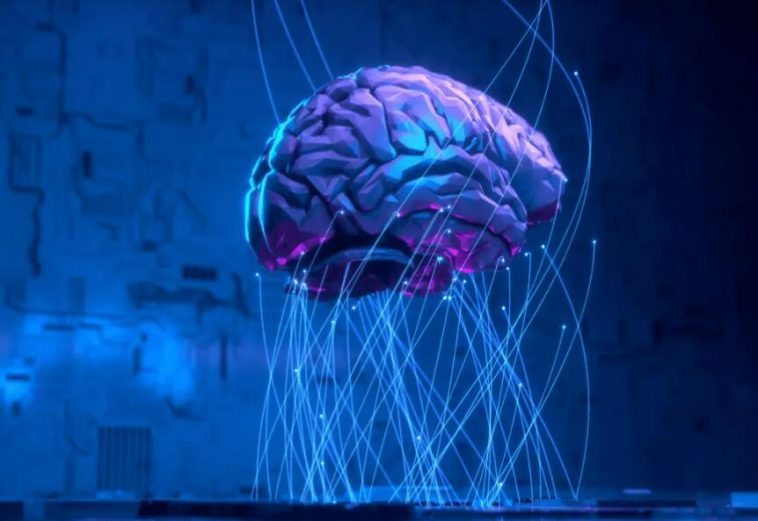Musk, the founder of Neuralink, hopes that one day through brain-computer interface technology, it will be possible to truly download the brain, memory and human personality. He also said he had uploaded his brain to the cloud and had spoken to a virtual version of himself.
Neuralink will present its latest progress on October 31. The company is facing a critical phase in moving from animal testing to human testing.
Neuralink’s brain-computer interface chip is described by Musk as a Fitbit implanted in the skull. The chip is connected to the brain through tiny wires. These electrodes are used to record and decode electrical signals from the brain and coordinate the movements of the hands and arms.
But the question now is, how many healthy people are really willing to have a device implanted in their brains to help them sleep better? Therefore, this also limits the commercial application scenarios of invasive brain-computer interface implants such as Neuralink.
Recently, Meta founder Zuckerberg “threw cold water” on Musk’s vision. Zuckerberg said that for at least the next 10 to 15 years, it is unclear how the average person will benefit from a brain implant like Neuralink.
Recently, a number of internationally renowned neuroscience experts also stated at a seminar on “Neurotechnology for the Public” held by the Tianqiao Brain Institute (TCCI) recently that the current application of this invasive brain-computer interface technology is mainly concentrated. In clinical applications, such as enhancing language function in patients with stroke or aphasia caused by other diseases, helping people with severe Parkinson’s disease or other movement disorders to significantly reduce symptoms, improving spelling in patients with ALS and stroke accuracy, etc.
This means that the current brain-computer interface mainly realizes the reconstruction of brain structure and function through the decoding of brain movement awareness and sensory feedback; while the industry is looking forward to the next generation of brain-computer interface technology for healthy people. , will be able to decode working memory, emotion and movement integration, and achieve stable improvement of brain function through adaptive adjustment and sensory feedback. Achieving these capabilities would also require a lengthy process that could take years just to initiate human clinical trials.
According to Hong Bo, a professor at the Department of Biomedical Engineering of Tsinghua University, with the current research level of brain-computer interface technology, it is far from the time to worry about ethical risks. With the development of technology, there will also be greater ethical risks in the future. challenge. Hong Bo’s team has now achieved minimally invasive implantation using 3 intracranial electrodes to help disabled typing, each with an equivalent information transmission rate of 20 bits per minute.
Professor Gerwin Schalk, director of the TCCI Applied Neurotechnology Frontier Laboratory, believes that the first functions of neurotechnology in the general population may involve sleep regulation and relief of depression and anxiety. He cited the use of neurotechnology to generate music that can arouse a positive response in the brain, so that the brain and the music rhythm can reach a consistent rhythm, which can help normal people to improve sleep quality in a personalized way.
However, to persuade healthy people to implant a “foreign body” in the brain to improve sleep quality, I am afraid that few people are willing to accept this option.
In contrast, a brain-computer interface that is closer to ordinary people should be a non-invasive device. As Zuckerberg revealed, Meta is working on a neural interface technology that could text people with the flick of a wrist. Zuckerberg hopes this neural interface technology can be part of his foray into the “metaverse” world.
Zuckerberg also acknowledged that the key to the success of this technology is how to get the computer to enter information directly into the human brain, and Meta may not be able to achieve this technology alone. What Meta can do is use the wearable device to pick up brain signals detected from other parts of the body, based on the signals emitted by the body’s motor neurons.
According to Zuckerberg’s vision, these signals could be relayed to a wearable device, such as a wristband. After the wristband receives the signal, it can translate it into specific commands. Zuckerberg’s visions are closer to the real life of ordinary people, but he also gave no timetable for realizing them.
Humans still have many unknowns on the way to explore brain-computer interface technology, and they should not stop. The development trend of brain-computer interface will also change from appearance to mechanism, from invasive to non-invasive, from a single discipline to achieve multi-disciplinary integration, and ultimately benefit a wider population.




GIPHY App Key not set. Please check settings